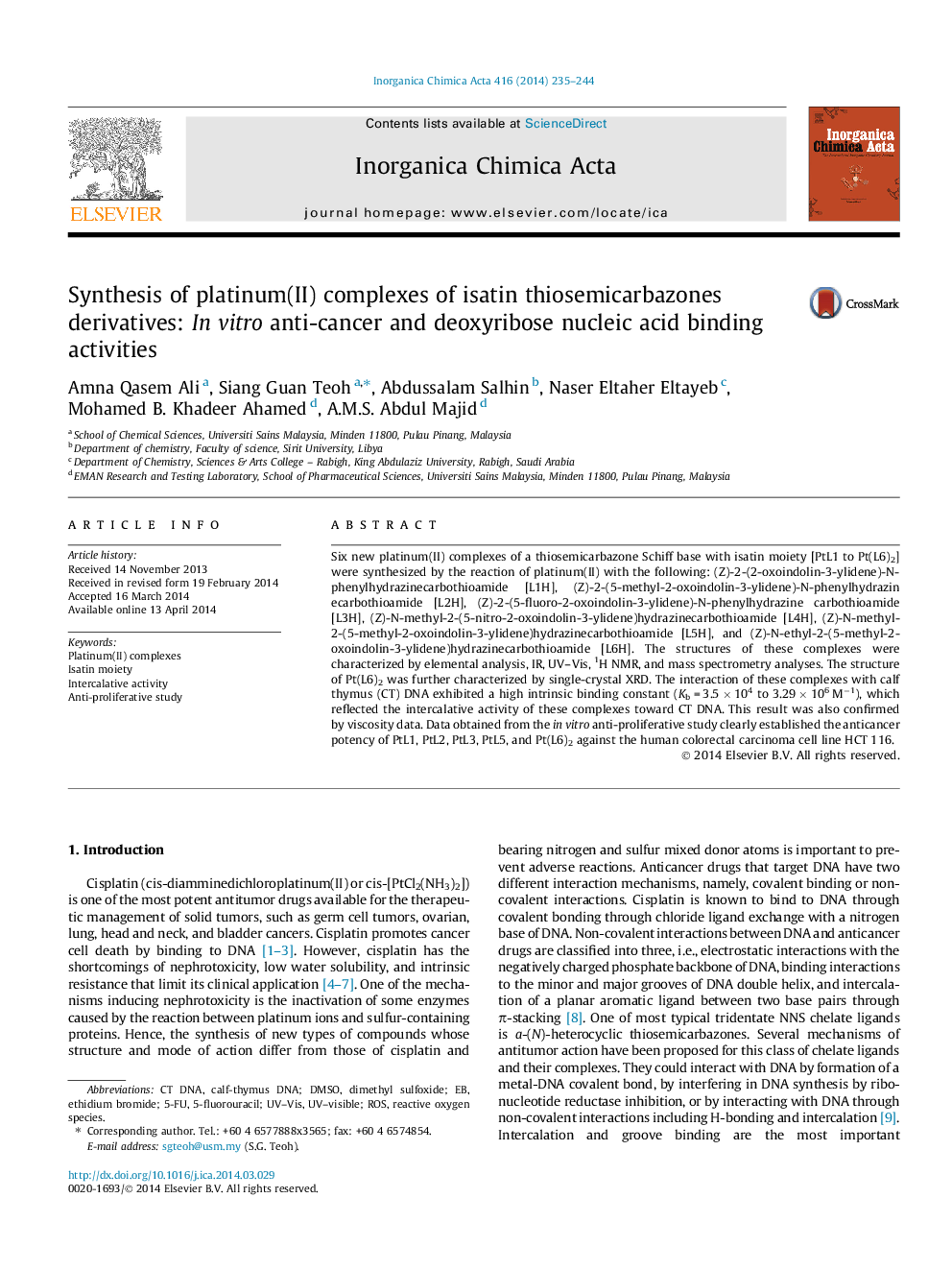| Article ID | Journal | Published Year | Pages | File Type |
|---|---|---|---|---|
| 1309975 | Inorganica Chimica Acta | 2014 | 10 Pages |
•Six new platinum(II) complexes of thiosemicarbazone Schiff base with isatin moiety were synthesized.•The interaction of these compounds with calf thymus (CT) DNA exhibited high intrinsic binding constant.•The in vitro anti-proliferative study clearly establishes the anticancer potency of some of these complexes against HCT 116.
Six new platinum(II) complexes of a thiosemicarbazone Schiff base with isatin moiety [PtL1 to Pt(L6)2] were synthesized by the reaction of platinum(II) with the following: (Z)-2-(2-oxoindolin-3-ylidene)-N-phenylhydrazinecarbothioamide [L1H], (Z)-2-(5-methyl-2-oxoindolin-3-ylidene)-N-phenylhydrazinecarbothioamide [L2H], (Z)-2-(5-fluoro-2-oxoindolin-3-ylidene)-N-phenylhydrazinecarbothioamide [L3H], (Z)-N-methyl-2-(5-nitro-2-oxoindolin-3-ylidene)hydrazinecarbothioamide [L4H], (Z)-N-methyl-2-(5-methyl-2-oxoindolin-3-ylidene)hydrazinecarbothioamide [L5H], and (Z)-N-ethyl-2-(5-methyl-2-oxoindolin-3-ylidene)hydrazinecarbothioamide [L6H]. The structures of these complexes were characterized by elemental analysis, IR, UV–Vis, 1H NMR, and mass spectrometry analyses. The structure of Pt(L6)2 was further characterized by single-crystal XRD. The interaction of these complexes with calf thymus (CT) DNA exhibited a high intrinsic binding constant (Kb = 3.5 × 104 to 3.29 × 106 M−1), which reflected the intercalative activity of these complexes toward CT DNA. This result was also confirmed by viscosity data. Data obtained from the in vitro anti-proliferative study clearly established the anticancer potency of PtL1, PtL2, PtL3, PtL5, and Pt(L6)2 against the human colorectal carcinoma cell line HCT 116.
Graphical abstractNew platinum(II) complexes with derivatives of thiosemicarbazone Schiff base with isatin moiety were synthesized. The interaction of these compounds with calf thymus (CT) DNA exhibited high intrinsic binding constant. PtL1–PtL6 showed ability to cleave the DNA by oxidative and hydrolytic pathway. The in vitro anti-proliferative study clearly establishes the anticancer potency of these complexes against HCT 116.Figure optionsDownload full-size imageDownload as PowerPoint slide
